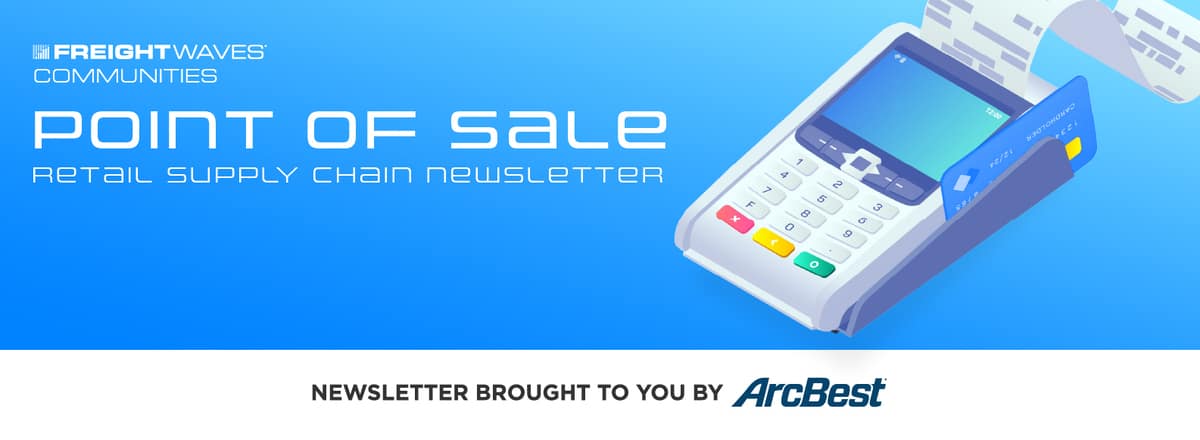
This is an excerpt from Monday’s (2/8) Point of Sale retail supply chain newsletter sponsored by ArcBest.
The Container Store’s (NYSE: TCS) most recent earnings call details the reality of shifting to a greater mix of e-commerce sales at a time when transportation capacity is extremely tight. To manage limited capacity, logistics providers have implemented surcharges and placed limits on its largest customers. These additional costs are putting significant strain on retailer bottom lines at a time when many are dealing with major top line declines.
Fortunately for TCS, the company is not dealing with major sales declines. In fact, the company rode COVID-induced in-home spending to the tune of 21% revenue growth yoy this quarter. The cost catalyst for TCS was much of that in-home spending was done in the home. Online sales surged 98% yoy in the third quarter of fiscal 2020.
“We certainly saw headwinds related to the higher mix of online sales, incurring a lot more in shipping costs than we originally expected,” Chief Financial Officer Jeff Miller said. “And the third-party surcharges we are experiencing on freight were much more impactful than we originally thought.”
TCS didn’t say what logistics provider it was using, but the surcharge environment that it saw dwindle its margin in the last quarter was referred to by FedEx (NYSE: FDX) as the “new normal” last July. Additionally, FDX announced new surcharges last month that I wrote “felt permanent”. UPS (NYSE: UPS) has imposed similar surcharges.
TCS gross margin decreased 40 basis points to 57.2%, primarily due to increased shipping costs as a result of a higher mix of online sales combined with incremental shipping surcharges instituted by third party carriers. The company said the margin compression would have been even worse if it hadn’t benefited from lower inventories and less promotional activity.
“We’re seeing [freight pressure], both in shipping costs and the cost to get our goods to us,” Miller said. The pressure isn’t going anywhere any time soon. From a truckload perspective, the market remains extremely active with freight volumes up 18% year-over-year and historically tight capacity. Carriers are rejecting 1-in-5 contracted tenders which is keeping upward pressure on spot rates. The market has normalized since the Christmas disruption with rejection rates and spot rates declining in lockstep, but the market is far from normal. Despite falling 15% since Christmas, spot rates remain up 25% yoy.
From a parcel standpoint, the major carriers are still backed up to epic proportions. Consumer spending continues to impress (up 5.3% yoy in latest week), e-commerce demand is not waning, and parcel networks are still working through mountains of holiday returns.
In some respects, just getting product to a point at which 3PLs can slap a surcharge on it is a major win. That would mean the product made it through a port facility, which is something not every retailer can boast (ask PTON).
Final Thoughts. The Container Store is not the first nor the last retailer to feel the strain of elevated shipping costs. Logistics costs for online retailers are on average double those of store-focused retailers. There is a reason every major retailer is solidifying its omnichannel offerings and it’s not only to capture online sales.
Like what you read? Sign up for Point of Sale for more retail earnings, e-commerce, and retail supply chain news and insights: https://web.freightwaves.com/point-of-sale
